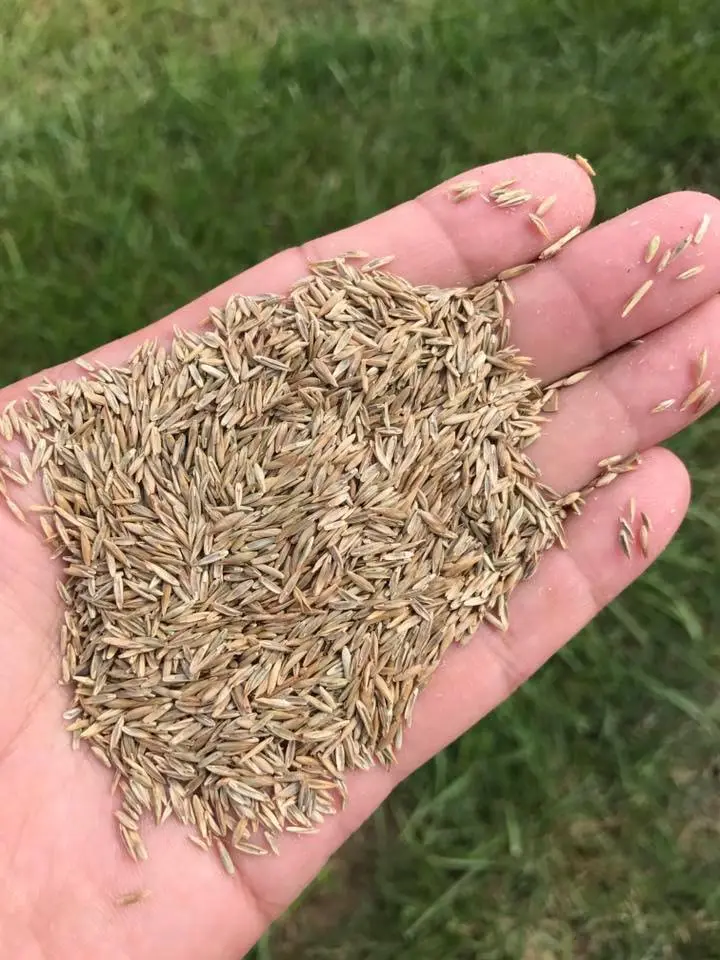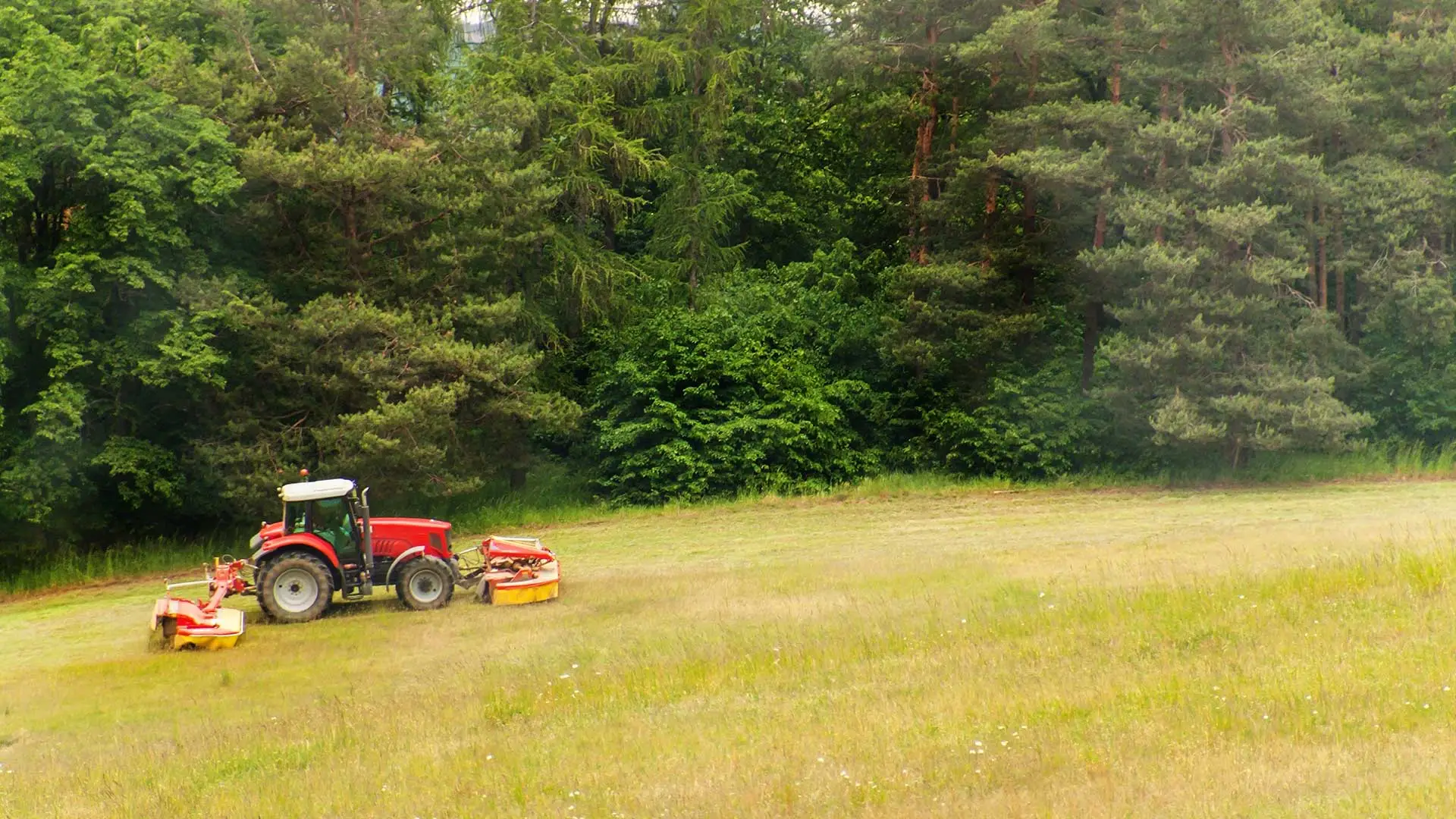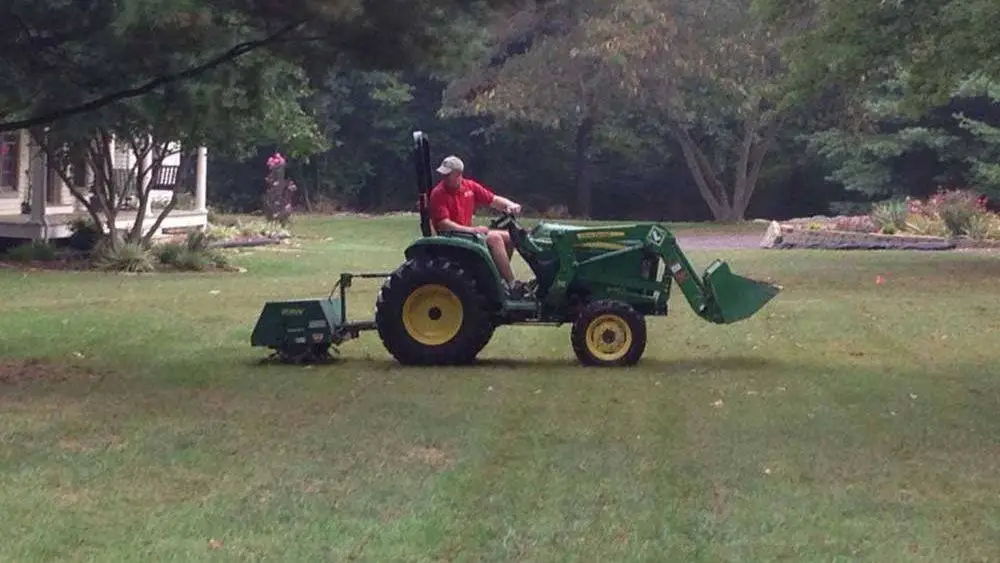While Fall is primarily seen as the time for the changing of leaves, pumpkins and cooler weather, did you know it's also a great time of year for lawn care and maintenance?
Cool weather translates into optimal growing conditions for your lawn, giving you the perfect opportunity to address any damage done by the Summer heat. It also helps you prepare your lawn for the Winter, and sets it up for a successful Spring.
Aerating and overseeding your lawn are two such jobs that should be done annually. By performing both of these tasks in the Fall (whether you do it yourself or hire it done), you'll wrap up the growing season in good shape, and put your lawn in a better position come Spring.
Why Aerate Your Lawn in the Fall

Over time, foot traffic and increased pressure on your lawn results in hard, compacted soil. Compacted soil doesn't allow for water and nutrients to penetrate the roots of the grass, aeration is how you fix this issue.
When you aerate (using a special piece of equipment), small cores of soil, about the size of your index finger, are removed from your lawn and then left there to decompose. By removing these cores, you are relieving the soil compaction and opening up a way for the roots to receive the water, nutrients and seeding that it needs.
Aeration also helps remove excessive thatch from your lawn. Thatch is best described as a layer of roots, stems, and organic material that builds up between the grass and the soil. As with soil compaction, thatch inhibits water penetration, decreasing the lawns ability to receive the moisture and nutrients that it needs.
Once your lawn is aerated, however, water, air, fertilizer and seed can reach the root zone effectively. Soil condition is the key to growing good grass, so consider aerating your lawn at least once a year.
Pro Tip: To determine if your lawn needs aerated, take a screwdriver and insert it into your lawn when the soil is moist (do this in multiple locations or where you think you have issues). If it can’t be easily inserted, your lawn likely has compaction and needs to be aerated.
Benefits of Overseeding After Aeration

The PERFECT time to overseed your yard is right after aeration!
Overseeding after aeration allows the grass seed to settle into the soil holes left behind by the aerator. This in turn, introduces your yard to new, healthy grass and gives the existing grass a push to be more resilient against disease and reduce the amount of weeds all while enhancing your lawn’s appearance.
Four Benefits of Overeseeding:
- Introduces new grass growth that can perform better in the Spring and/or in the cold days of winter.
- New growth brings about new strength to the existing grass, giving it the resistance necessary to fight diseases that can bring a beautiful lawn to an end.
- Reduces the amount of weeds.
- Gives your existing lawn a facelift.
By overseeding your lawn in the Fall after aeration, you can fill in damaged areas and bare patches, plus thicken up the lawn before it goes into dormancy for the Winter.
There are two ways to overseed your lawn - by hand or by use of a broadcast spreader. Our recommendation, use a broadcast spreader (if you're paying for aeration ask your lawn care professional to do this as part of the job). Broadcast spreaders distribute the seed onto the yard in a precise and even application. Once that is done, you can then go back over it by hand as needed in the troublesome areas.
A Step Above: Linnemann Lawn Care and Landscaping, Inc. always leaves a small bag of seed behind for it's aeration and overseeding clients. This way, we can give them instructions on how to use it and we know that they are using the same seed.

What Aeration & Overseeding Looks Like for Your Yard
By prioritizing seed-to-soil contact with a combination of aeration and overseeding, you're making the most of both services and giving your grass it's best chance at growing thick, healthy and robust before Winter.
Removing the cores through aeration helps relieve soil compaction and thatch accumulation, allowing the new seed to germinate and establish itself quicker. Which in turn will Lead to better absorption of light, water and air, giving your yard deeper roots and more nutrient rich soil.
Once Spring arrives, you can enjoy the benefits of:
- A revitalized lawn: Putting down new seed means that new life will be brought to your lawn.
- More germination: There will be more growth throughout your lawn as the seeds take root and sprout new grass blades.
- Fuller grass: Seeding allows us to fill in any spaces in your lawn so that new grass can grow there.
Aeration and overseeding are just two of the many highly beneficial lawn services Linnemann Lawn Care and Landscaping, Inc. provides to help maintain the healthy, thick appearance of your lawn. See how this service can be of benefit to you here.





Comments (0)
Thanks for your comment!
Thanks for your feedback! Your comments have been successfully submitted! Please note, all comments require admin approval prior to display.
Error submitting comment!
There is a problem with your comment, please see below and try again.